
5 FÉVRIER 2014, LE NAUFRAGE DU LUNO (Les photos et le récit complet)
FEBRUARY 05, 2014. THE WRECK OF THE LUNO (the photos and the complete telling)
FEBRUARY 05, 2014. THE WRECK OF THE LUNO (the photos and the complete telling)
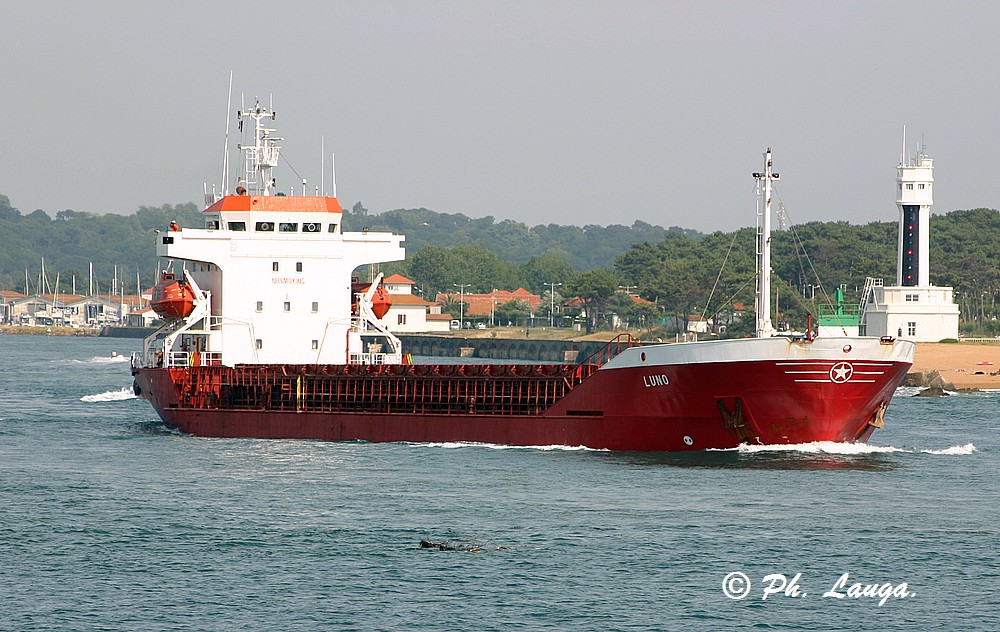 |
Le petit cargo espagnol LUNO était un habitué du port de Bayonne où il venait charger des billettes d'acier. On le voit ici le 3 juillet 2012 quittant le port ses deux cales pleines. |
The small Spanish general cargo ship LUNO was a regular of the port of Bayonne where she was coming to load steel products. In this photo, she is leaving the port on July 3, 2012. |
|---|
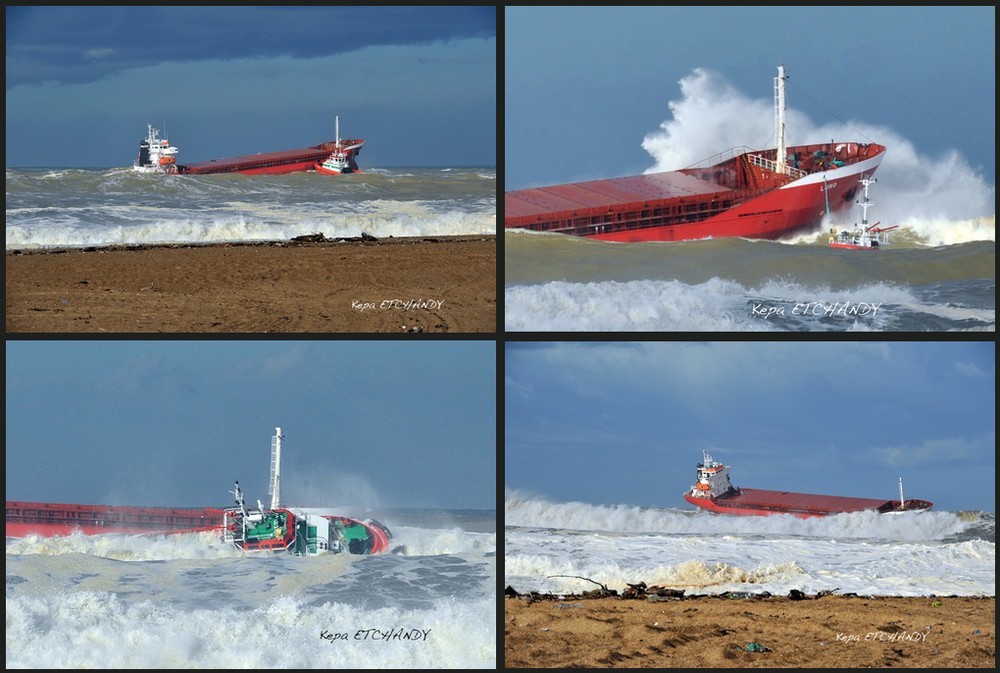 |
Ces photos de Kepa Etchandy prises le 5 février 2014, montrent que le temps est beau mais que la houle grossit peu à peu. Il est aux environs de 10h, le pilote du port de Bayonne est à bord. Quelques minutes plus tôt, le LUNO a subi une panne électrique totale, il n'a plus de propulsion. Le remorqueur BALEA appelé à la rescourse tente une manoeuvre mais doit abandonner. La mer est trop forte et frappé par une déferlante, il est près de chavirer. Le LUNO est livré à lui même et à la houle. (Photos Kepa Etchandy). |
These photos taken by Kepa Etchandy on February 5, 2014, show us that the weather is nice but the swell grows gradually. It is around 10:00 am, the pilot of the port of Bayonne is on board. A few minutes earlier, the LUNO suffered a total electrical failure and there is no more propulsion. The tug BALEA called for rescue attempts a maneuver but must give up. the sea is too strong and hit by a flood wave, she is close to capsize.
The LUNO is left to himself and to the swell. (Photos Kepa Etchandy) |
|---|
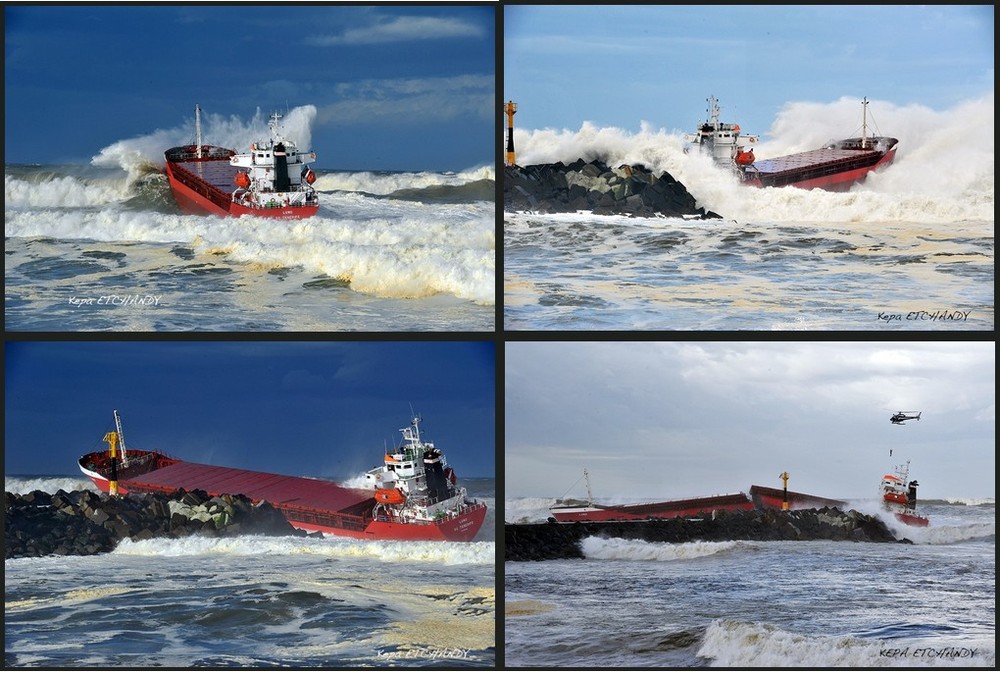 |
Le LUNO dérive vers le sud. Les tentative de redémarrer la machine échouent. Les ancres sont mouillées mais la houle est trop forte maintenant. Les chaines cassent. Vers 10h30, le petit cargo espagnol frappe la digue de la plage des Cavaliers. L'opération de secours est immédiatement lancée. Le LUNO se brise en deux, entre ses deux cales. (Photos Kepa Etchandy). |
The LUNO is drifting southward. The attempt to restart failed. The ship casts her anchors but the swell is too strong now. The chains break. Around 10:30, the small Spanish freighter hits the dike of beach "Les cavaliers". The rescue operation is immediately launched. Soon, the LUNO breaks into two, between her two holds. (Photos Kepa Etchandy) |
|---|
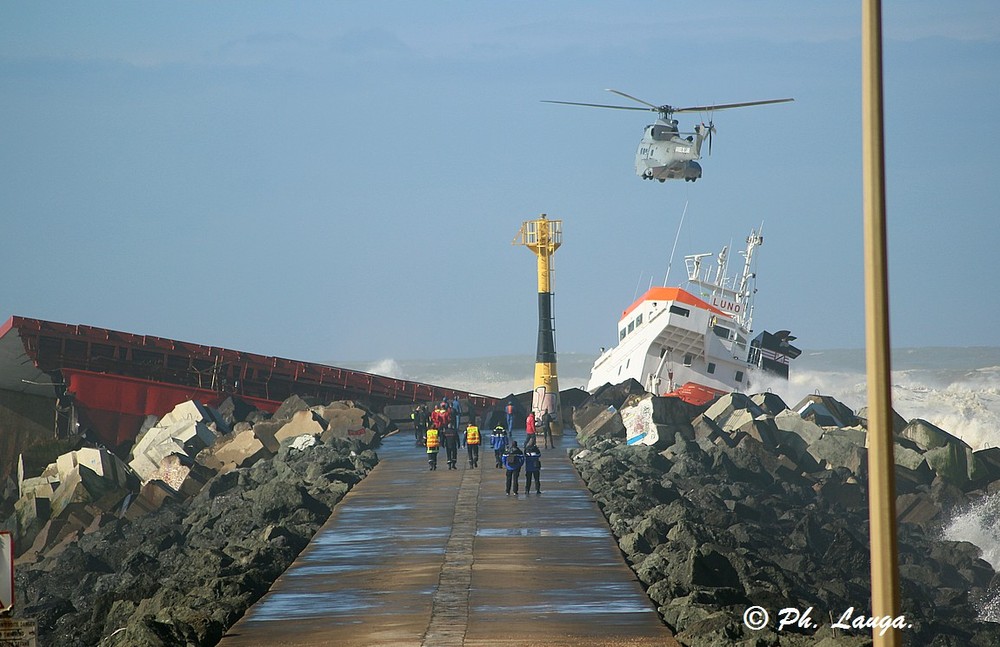 |
Il est environ 13h30 lorsque j'arrive sur les lieux. Il y a foule. Après une première tentative d'évacuation ratée, à cause d'un important courant électrostatique, l'hélitreuillage va pouvoir commencer. L'opération est délicate. Le pilote de la base de Cazaux et ses équipiers prennent de gros risques pour sauver les 12 hommes à bord du cargo. Les mouvements incessants du LUNO, les vagues qui le submergent à tout moment. Le danger est omniprésent. |
It is around 1:30 p.m. when I arrive on the scene. This is very crowdy. After a first failed evacuation attempt, due to a significant electrostatic charges, the helicopter winching can begin. The salvage operation is delicate. The pilot of the helicopter and his crew take big risks to save the 12 men aboard the freighter. The incessant movements of the ship rolling from side to side, the waves submerging the ship any time. The danger is omnipresent. |
|---|
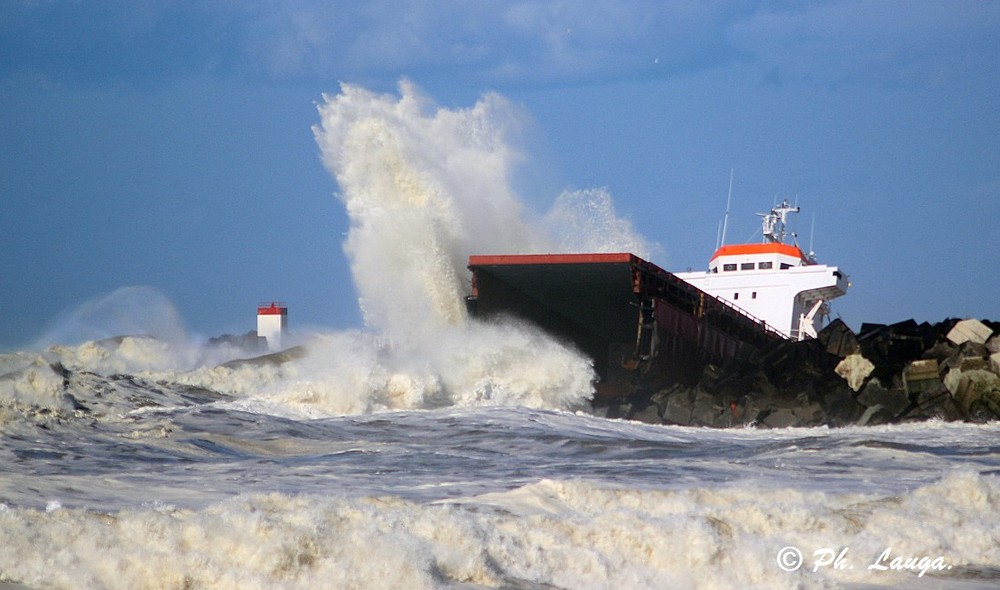 |
La marée descend, c'est une bonne chose, mais les vagues sont encore très fortes. A chaque fois, l'arrière du navire, accroché aux rochers se balance et risque être repris par la mer. |
The tide is ebbing, this is a good thing, but the waves are still very strong. Each time, the stern, hooked to the rocks swings from side to side and can be taken over by the sea. |
|---|
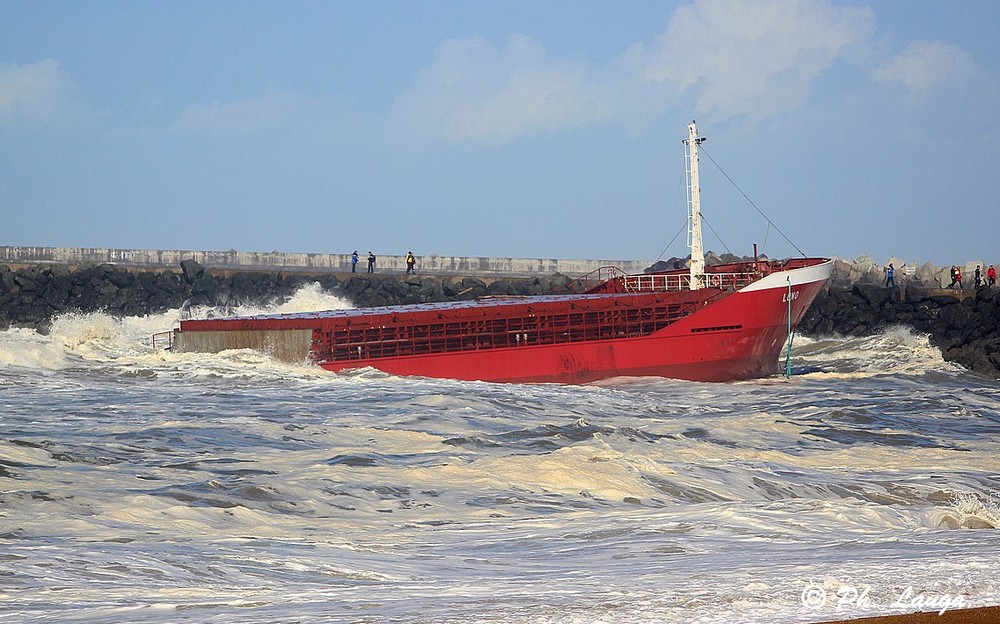 |
L'avant du LUNO est arrivé sur la plage des Cavaliers. |
The bow of the LUNO is on the beach of the Cavaliers. |
|---|
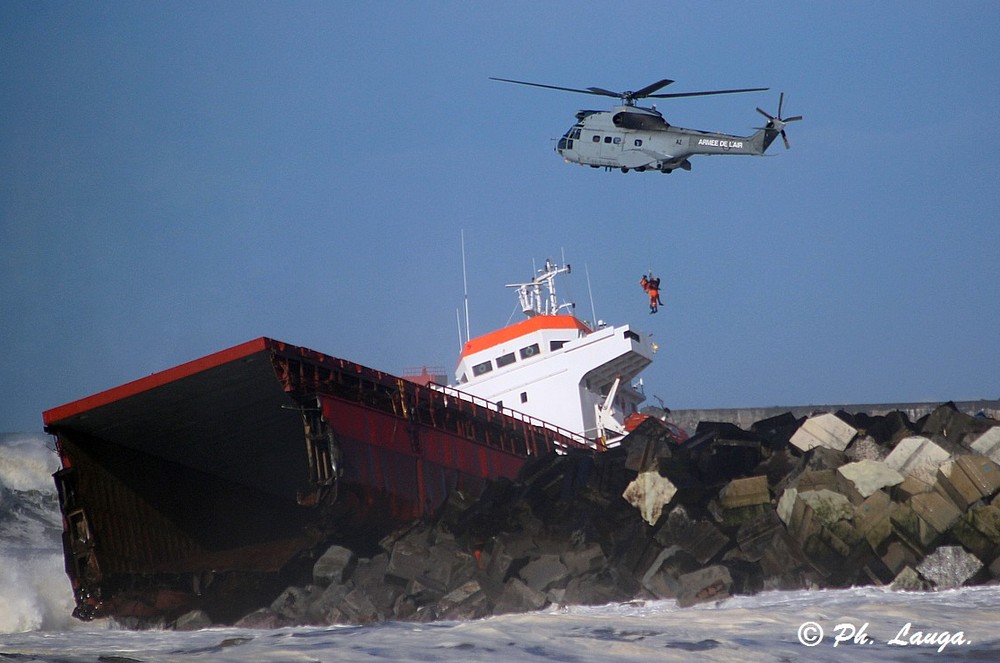 |
 |
Debout sur l'aileron bâbord du LUNO, le pilote du port de Bayonne coordonne l'évacuation avec le pilote de l'hélicoptère et le treuilliste. Les membres d'équipage du navire sont assis contre la cloison de la timonerie. Sur cette photo, on remarque également le câble d'hélitreuillage. (Rob's Photos). |
Standing on the port side bridge wing of the LUNO, the pilot of the port of Bayonne coordinate the evacuation with the pilot of the helicopter and the winch man. The crew members of the ship are sitting against the wall of the wheelhouse. In this photo, we also notice the helicopter winching cable (Rob's photos). |
|---|
 |
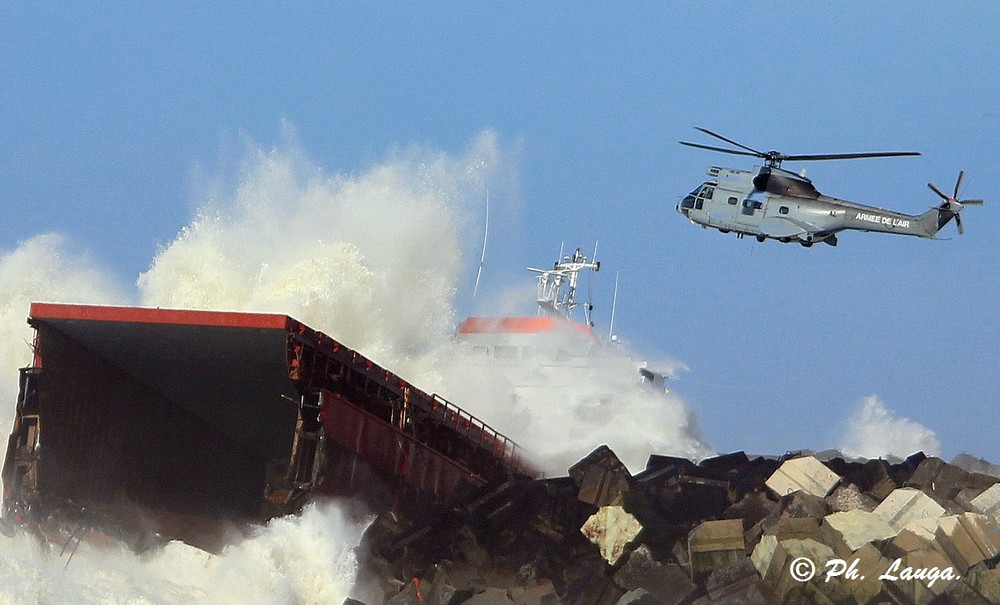 |
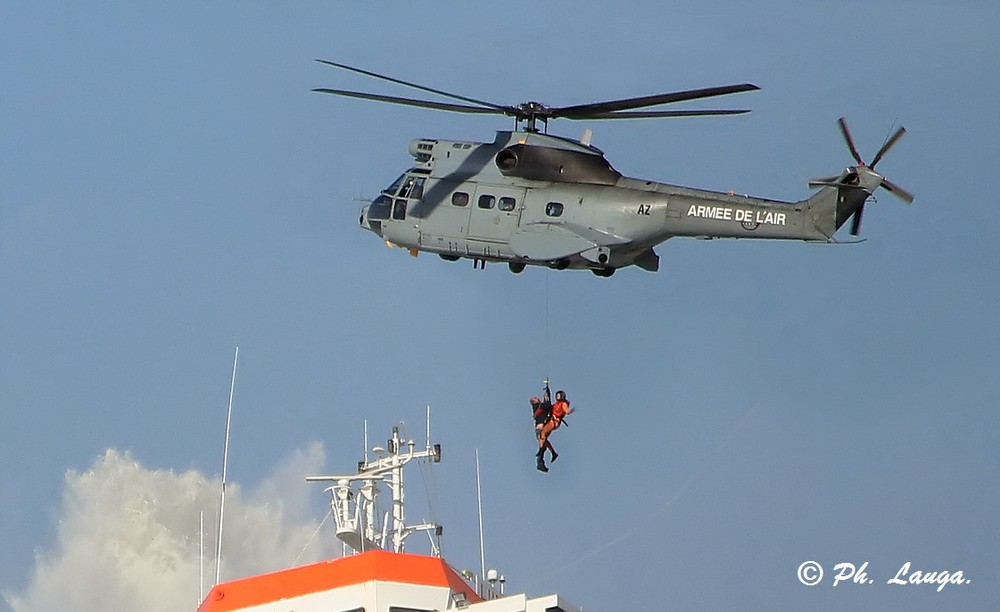 |
Hélitreuillage de l'équipage du LUNO. Les conditions de vent sont bonnes, mais le danger est omniprésent, à cause des vagues et des mouvements du navire. Le pilote du port de Bayonne est le dernier à quitter le LUNO. Bien sûr, un naufrage est toujours triste et regrettable, mais le plus important c'est que toutes les vies humaines ont été sauvées. |
The helicopter winching of the crew members of the LUNO. The wind conditions are good, but the danger is omnipresent, because of the big waves and the ship rolling. The pilot of the port of Bayonne is the last to leave the LUNO. Of course, a shipwreck is always sad and unfortunate, but the most important is that all human lives have been saved. |
|---|
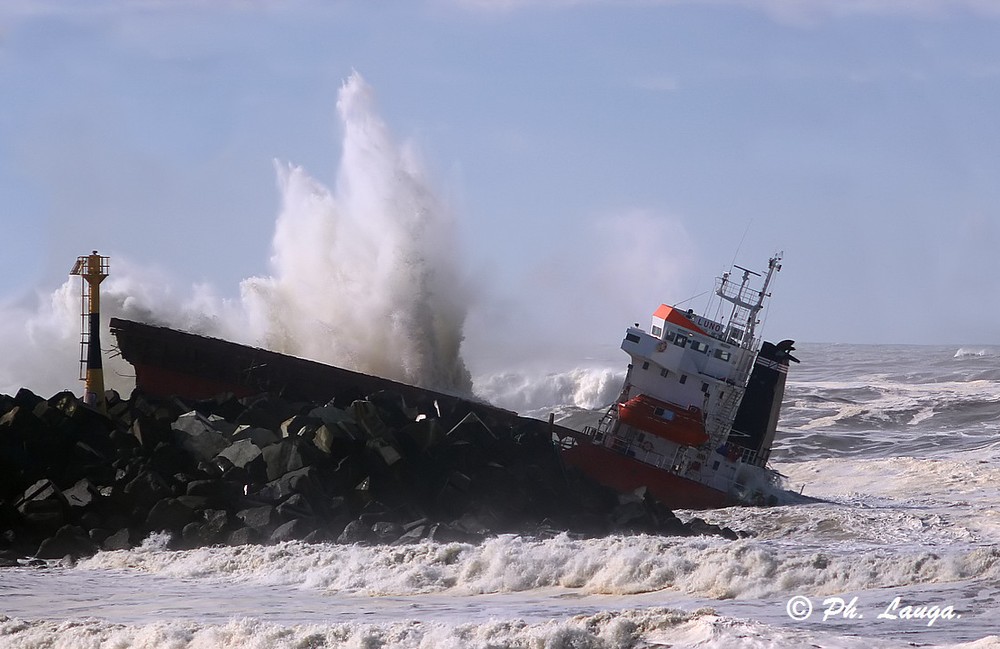 |
15h00, il n'y a plus personne à bord du LUNO. Tous les marins sont saufs. |
3:00 pm, there is no one aboard LUNO. All the sailors are safe. |
|---|
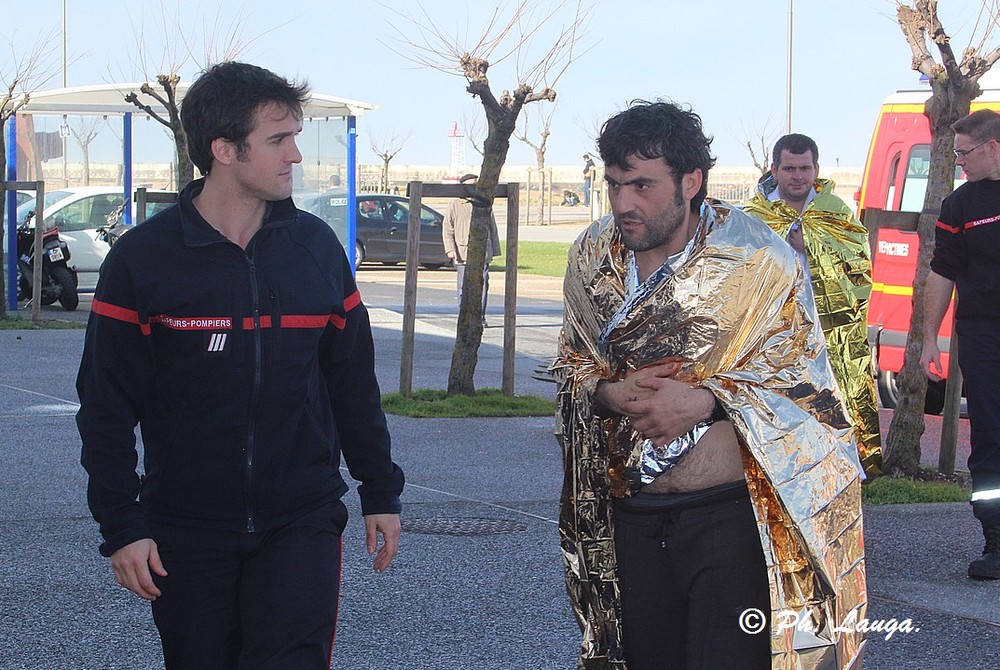 |
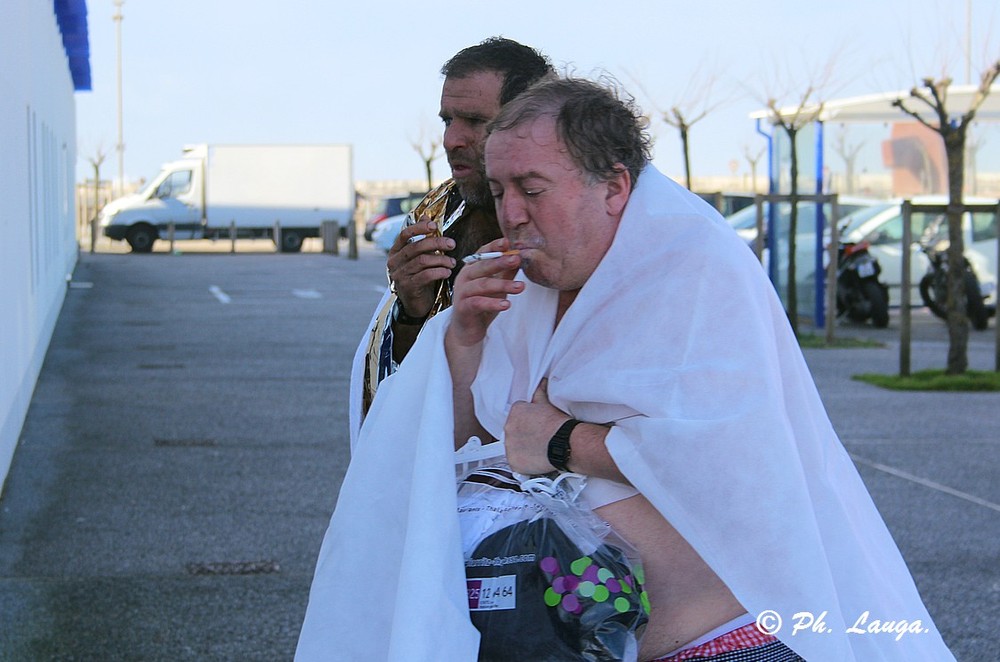 |
Fatigués, moralement éprouvés, mais vivants. Les membres d'équipage du LUNO sont pris en charge par les pompiers et les médecins. |
Tired, morally shocked, but alive. The crew members of LUNO are cared by firefighters and doctors. |
|---|
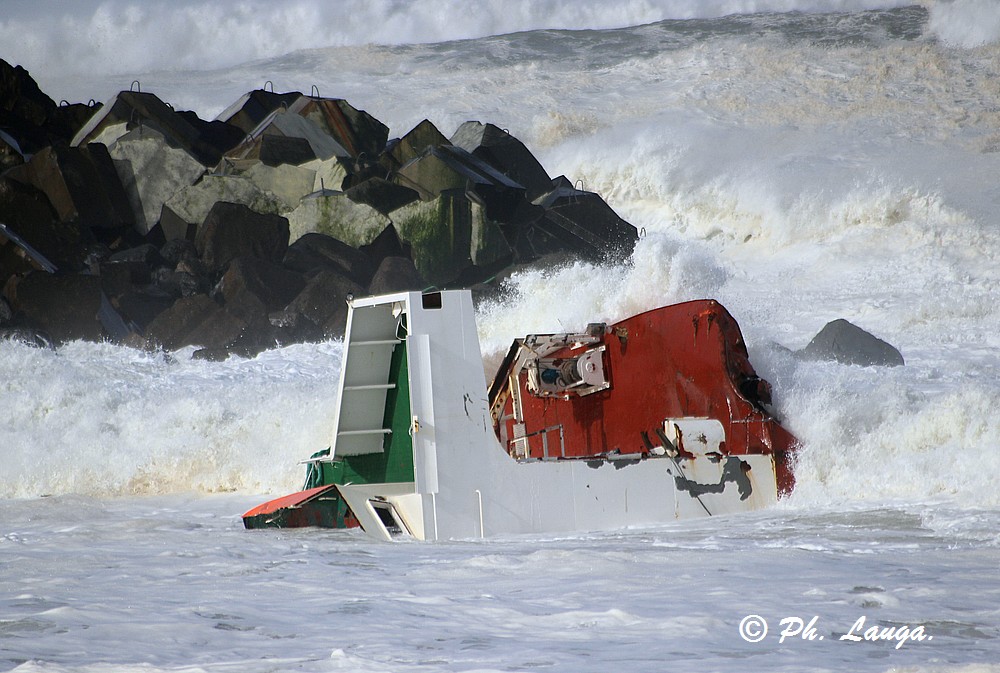 |
Durant la nuit suivante et la nouvelle marée, l'arrière du LUNO se brise en deux parties, juste à l'aplomb du château qui bascule en arrière de l'autre côté de la digue. |
During the Following night and the new tide, the stern of the LUNO breaks into two parts, just plumb the house of the vessel and topples back on the other side of the dike. |
|---|
LUNO
General Cargo Ship
Built in 1994 by Astilleros de Murueta, Guernica (Spain)
IMO : 9072329
Flag : Spain
Length : 100,65 m
Beam : 14,80 m
Draught : 6,01 m
DWT : 4 635 t
Gross : 3 446 t
Owner & Manager : Murueta Naviera, Bilbao (Spain)